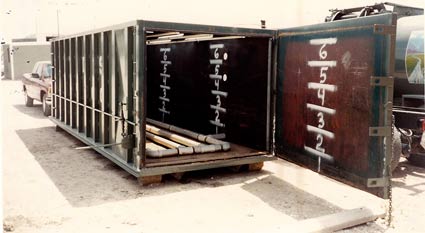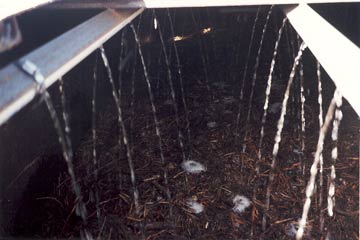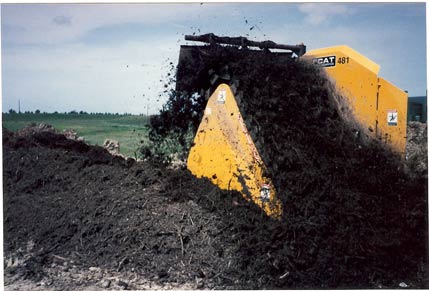Work on this two-year state-funded research project included process development, design and construction of system components, project management and contract administration for a low cost natural method of filtering domestic septage.
Recognizing the need for low-cost septage treatment methods, Community Environmental Services, Inc. developed and carried out a two-year research project beginning in 1993 to evaluate the use of waste wood chips for pre-treating raw septage, and the beneficial reuse of composted filtered septage and wood chips. The project demonstrated a method for dewatering and filtering septage that utilizes waste wood chips. The spent batches of wood chips and biosolids were composted, and the filtrate from the treatment process was found to be of a quality suitable for certain types of reuse with very little additional treatment. Several U.S. patents reference this research work.
The Texas On-Site Wastewater Treatment Research Council funded this project in January 1993 to promote the beneficial reuse of septage. The project demonstrated a method for dewatering and filtering septage that utilizes waste wood chips. The spent batches of wood chips and biosolids were composted, and the filtrate from the treatment process was of suitable quality for certain types of reuse with very little additional treatment. The pilot scale septage treatment system was set up adjacent to a municipal wastewater treatment plant and had 3 components: (1) a modified 40 cu. yd. solid waste rolloff unit, (2) a pump tank with piping and valves leading to 2 additional tanks, and (3) two 2,100-gallon polyethylene tanks. Below are pictures of the system and of various stages of the processes.
Interior view of modified 40 cubic yard solid waste roll-off unit, used for filtering septage with waste chipped wood.
View of research septage treatment system located at a small community wastewater treatment plant.
View of septage filtering unit, with wood chip depths (in feet) marked.
Septage pump trucks delivering septage to tanks at the research site.
View of research facility from above.
Raw septage as compared with filtrate following two passes (initial plus one recycle pass) through the treatment unit.
Filtrate after additional pass through the filtration unit.
Filtered septage residuals and wood chips prior to delivery to the composting site.
Treatment unit emptying residuals to a composting site at a local landfill. The biosolids and waste wood chips were then windrow composted for subsequent beneficial reuse.
Residuals being emptied at composting site.
Composted residuals/biosolids and wood chips being turned in the windrow compost pile.
Windrow compost pile being turned. Composting requires the proper mixture of carbon (wood chips), nitrogen (biosolids/septage residuals), aerobic conditions, and moisture content.
Several U.S. patents reference this research work.












